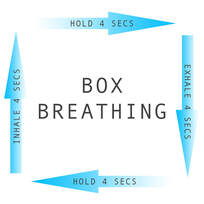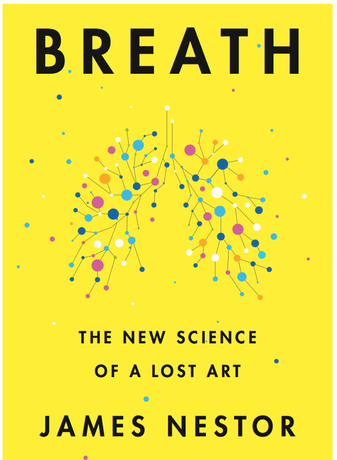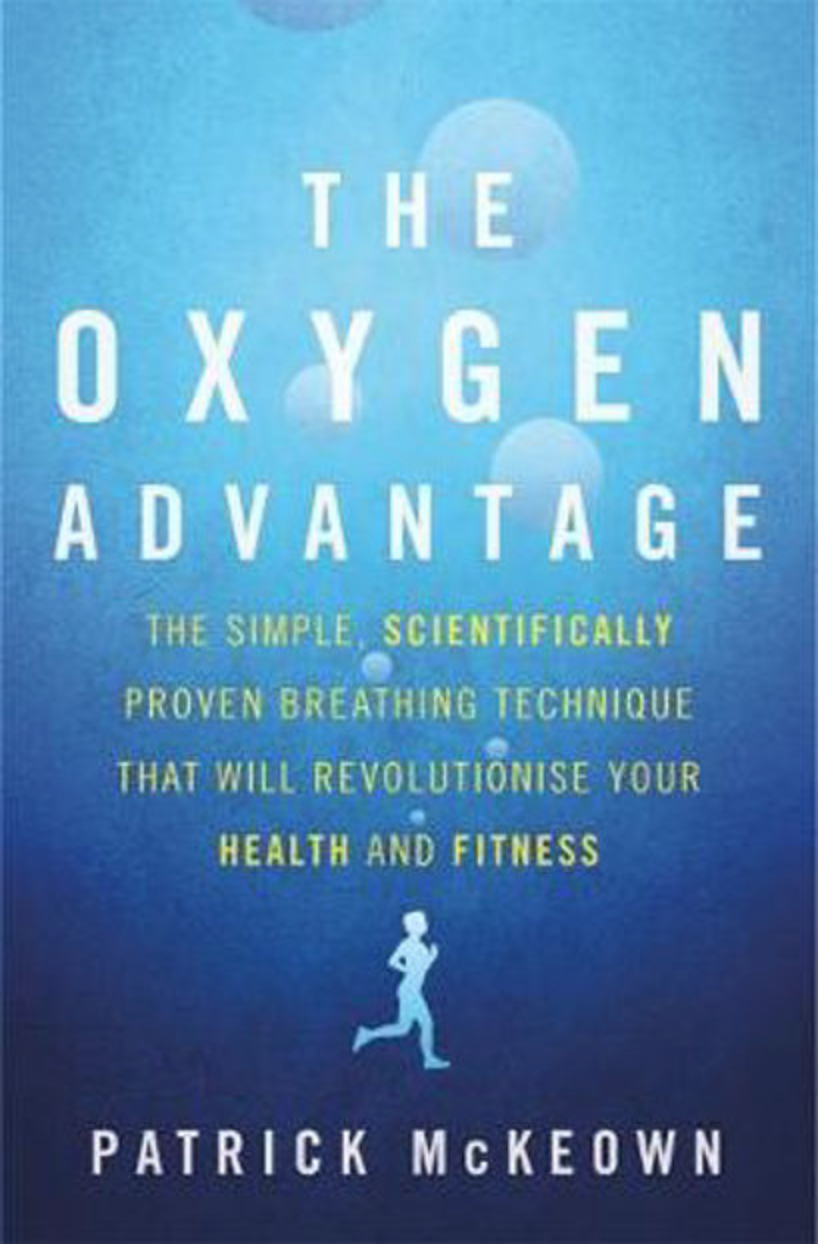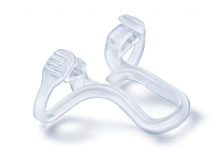How We Breathe Affects The Health Of The Entire Body
The structure of the human face and skull has been changing in the western world over the last 100 years. Our faces and jaws have become narrower with a lack of space for our teeth, resulting in dental extractions and braces being fitted to straighten teeth. Inadequate growth and expansion of the hard palate (roof of the mouth) also means that the internal airways and sinuses, which occupy approximately the size of a small fist behind the nose, are not as clear and expanded as they were designed to be. This is one of the reasons we are seeing increasing numbers of people suffering with breathing disorders, snoring, sleep apnea, asthma, autoimmune disease and allergies.
Improving someone's breathing patterns provides a great foundation for reversing many modern, chronic conditions such as anxiety, sleep, cardiovascular disease. Breathing techniques to restore good functional patterns will even help chronic low back pain, knee and ankle injuries due to the stabilising effect of the diaphragm on the pelvis and spine. This is why you'll notice I pay a lot of attention to how my Chiropractic treatment positively improves the movement of your spine and rib cage and therefore your ability to breathe. How we breathe really does affect every aspect of health!
In this section of the website I have gathered the most informative podcasts, books and information that I have found regarding how breathing affects our health. As I work to complete the Buteyko Instructor course I will share exercises and practical advise that you can practice in between treatment sessions.
Improving someone's breathing patterns provides a great foundation for reversing many modern, chronic conditions such as anxiety, sleep, cardiovascular disease. Breathing techniques to restore good functional patterns will even help chronic low back pain, knee and ankle injuries due to the stabilising effect of the diaphragm on the pelvis and spine. This is why you'll notice I pay a lot of attention to how my Chiropractic treatment positively improves the movement of your spine and rib cage and therefore your ability to breathe. How we breathe really does affect every aspect of health!
In this section of the website I have gathered the most informative podcasts, books and information that I have found regarding how breathing affects our health. As I work to complete the Buteyko Instructor course I will share exercises and practical advise that you can practice in between treatment sessions.
How to begin?
The good news is, regardless of the shape of how blocked your nose is it's never too late to begin simple, effective daily breathing exercises that have the potential to change your breathing from day one. If you are a client at Unwind you are likely to have noticed immediate improvement in how easy it is to take a full breath after your first treatment. In addition to Chiropractic treatment I will help you with nose unblocking exercises and provided you don't have a physical obstruction in your nasal cavity, with consistent practice your nose should get clearer and clearer over time.
In the meantime, and if you are not yet receiving treatment you can take note of whether you habitually breathe through your nose or your mouth during the day and whilst exercising. The difference this creates in your physiology down to a cellular level (think mitochondria the 'batteries' of our cells) and affect on mental health (think anxiety V's calm and peaceful way of being) is staggering and represents an exciting and free health intervention.
In the meantime, and if you are not yet receiving treatment you can take note of whether you habitually breathe through your nose or your mouth during the day and whilst exercising. The difference this creates in your physiology down to a cellular level (think mitochondria the 'batteries' of our cells) and affect on mental health (think anxiety V's calm and peaceful way of being) is staggering and represents an exciting and free health intervention.
Nose Breathing V's Mouth Breathing.
|
How Efficient is Your Breathing?
|
|
Nitric Oxide & The Cardiovascular System.
Nitric oxide (NO) has an incredibly beneficial effect on the human body and explains the body-wide effects of optimal breathing.
Nasal breathing causes the release of NO in the paranasal sinuses which is necessary for increasing the levels of Carbon Dioxide (CO2) in the blood, which in turn is necessary for the efficient exchange of oxygen in the lungs.
It is important to note that you need sufficient levels of Magnesium in order to utilise Nitric Oxide.
Nitric Oxide also...
Nasal breathing causes the release of NO in the paranasal sinuses which is necessary for increasing the levels of Carbon Dioxide (CO2) in the blood, which in turn is necessary for the efficient exchange of oxygen in the lungs.
It is important to note that you need sufficient levels of Magnesium in order to utilise Nitric Oxide.
Nitric Oxide also...
- Sterilises the air as it enters the airways
- Dilates bronchiolli (the airways throughout the lungs)
- Redistributes blood through the lungs for more efficient oxygen uptake.
- Helps mitochondria function at a higher level
- Stimulates the liver to release fat, and peripheral fat cells to release fat.
- Nitric oxide has a powerful effect on the endothelium - lining of blood vessels and therefore has a knock-on effect of strengthening the cardiovascular system. In turn, a healthy cardiovascular system assists your immune system. Incidentally, damage to the endothelium of our blood vessels explains effects of the SARS-CoV2 virus.
The 4 Minute Workout - Nitric Oxide 'Dump'.
|
Breathing & Sleep.
Ideally you want to finish eating 3 hours before going to sleep so that your gut can properly digest the food and allow the natural wind-down of your brain and body for an undisturbed night of sleep.
Eating late affects the moment of the diaphragm and therefore restricts the normal slow, deep breathing pattern during sleep. Have you ever had that feeling of not being able to breathe fully due to a belly full of food?
When our breathing is fast and shallow it automatically activates the sympathetic nervous system which is involved in initiating and maintaining the stress response (think the anxiety, 'freeze, fight and flight' system). This is not ideal for getting a peaceful, restorative night's sleep.
As you will find out in the Unwind 'Sleep' section, sleep is a, if not the, key lifestyle factor that affects how well your immune system fends off infection and disease, if affects your risk of cancer, Alzheimer's, Diabetes, Cardiovascular disease to name just a few. In fact a lack of sleep < 7 hours a night is a risk factor for all-causes of mortality.
Eating late affects the moment of the diaphragm and therefore restricts the normal slow, deep breathing pattern during sleep. Have you ever had that feeling of not being able to breathe fully due to a belly full of food?
When our breathing is fast and shallow it automatically activates the sympathetic nervous system which is involved in initiating and maintaining the stress response (think the anxiety, 'freeze, fight and flight' system). This is not ideal for getting a peaceful, restorative night's sleep.
As you will find out in the Unwind 'Sleep' section, sleep is a, if not the, key lifestyle factor that affects how well your immune system fends off infection and disease, if affects your risk of cancer, Alzheimer's, Diabetes, Cardiovascular disease to name just a few. In fact a lack of sleep < 7 hours a night is a risk factor for all-causes of mortality.
Breathing Patterns, Ribcage Flexibility & Longevity.
Nasal breathing draws the incoming air deeper into the lungs than mouth breathing courtesy of the diaphragm. The diaphragm is a is a sheet of internal skeletal muscle that extends across the bottom of the ribcage. It is attached to the spine, ribs and sternum (breastbone) which means that if your whole spine and discs are in a good condition ie; flexible, upright (as opposed to a slumped tilted/twisted posture) then you get to breathe with optimal function.
I have yet to meet someone that does not have some form of breathing dysfunction or restriction as a result of a mechanical issue when they first come to Unwind for treatment. Irrespective of their original symptoms, be it neck pain, headaches or low back pain etc. Poor posture, stiffness and restriction of the spine and ribs go hand in hand with breathing dysfunction, it is for this reason that you will find me paying close attention to the movements of your spine and whole body whilst you breathe.
If you are unable to breathe properly and through the nose, including during exercise, you are unlikely to be breathing adequately at night which we now know will affect your quality of sleep. When sleep is disrupted the adverse knock-on effects are widespread, affecting all organ systems, brain function and mental health. This is the reason many people report improvement in their sleep after just a handful of treatment sessions as their ease of breathing increases from day one.
I have yet to meet someone that does not have some form of breathing dysfunction or restriction as a result of a mechanical issue when they first come to Unwind for treatment. Irrespective of their original symptoms, be it neck pain, headaches or low back pain etc. Poor posture, stiffness and restriction of the spine and ribs go hand in hand with breathing dysfunction, it is for this reason that you will find me paying close attention to the movements of your spine and whole body whilst you breathe.
If you are unable to breathe properly and through the nose, including during exercise, you are unlikely to be breathing adequately at night which we now know will affect your quality of sleep. When sleep is disrupted the adverse knock-on effects are widespread, affecting all organ systems, brain function and mental health. This is the reason many people report improvement in their sleep after just a handful of treatment sessions as their ease of breathing increases from day one.
Breathing Facts:
- How you breathe as a child determines how your face and teeth look as an adult.
- Humans (and animals) are designed specifically to nose breathe.
- Nasal breathing and consequently the position of the tongue in the roof of the mouth assists craniofacial development as we grow. The pressure of the tongue determines the width of the face, brings the jaw into the optimum forwards position in the face, allowing room for the sinuses and airways.
- Nasal breathing as opposed to mouth breathing releases Nitric Oxide from the paranasal sinuses which is necessary for dilating blood vessels and increasing the concentration of Carbon Dioxide in the blood, essential for the release of oxygen in the tissues of the body.
- Nasal breathing activates the parasympathetic nervous system that supports rest, recovery and digestion. (The sympathetic nervous system is responsible for survival; freeze, flight and fight and stress states.
- Nasal breathing tends to be slower and draws air deeper into the lungs. The lower part of the lungs have a larger concentration of blood vessels and therefore more opportunity for oxygen absorption.
Mouth breathing does not effectively release NO and instead activates our stress, anxiety states which lead to further fatigue and stress hormones.
Nasal breathing activates the part of the nervous system that supports rest, recovery and digestion rather than our stress-states responsible for survival; freeze, flight or fight.
The habit of mouth breathing, even without obstruction of the nasal cavities, alters the balance of the facial muscles and causes facial skeletal changes; typically this creates a long, narrow face and nose. It decreases O2 absorption leading to a downward spiral effect on sleep, stamina and energy levels. Breathing through the mouth, particularly during exertion draws cold, dry air through the airways which can aggravate exercise induced asthma. It also lowers the concentration of carbon dioxide in the blood as people over-breathe, blowing off more CO2 which lowers the capacity for oxygen exchange in the lungs. This explains how we can get 20% more oxygen into the body by nasal breathing.
Approximately 50% of children mouth breathe.
You have a 40% chance of developing ADHD, ADD if you habitually mouth breathe.
43% of men aged 50-70 have a sleep disorder and are at risk of sleep apnoea.
Overcrowding of the teeth is an airway problem.
Faulty breathing patterns can be addressed and this is the key.
Breathing and Anxiety.
Breathing patterns and anxiety demonstrate perfectly the connection between the mind and body. One will affect the other so quickly that it's difficult to know whether a thought triggered an altered breathing pattern or visa versa. If you or anyone you know has experienced the feeling of anxiety and/or a panic attack they'll very likely tell you that they may be nervous of getting even slightly out of breath from exercise because it could trigger an episode. This is because we immediately change our physiology and biochemistry which affects the brain and in particular the vagus nerve (the cranial nerve which controls the autonomic nervous system). Dis-regulation of the vagus nerve underpins conditions such as Chronic Fatigue Syndrome, ME and POTS and an enormous amount of research has been done in the US by Dr Diana Driscoll and her team. You can read more about their work here and listen to an enlightening interview with Dr Driscoll on the Ben Greenfield Fitness Podcast here.
This is not a fun place to be, the good news is there is a great, easy breathing exercise strategy you can work through to start to restore a normal, rational balance to the mind and breathing.
This is not a fun place to be, the good news is there is a great, easy breathing exercise strategy you can work through to start to restore a normal, rational balance to the mind and breathing.
What if you find it difficult breathe through your nose?
You are not alone if you find it virtually impossible to breathe through your nose, even at rest. Many people suffer with physical obstruction in the nose or have a 'stuffy' nose.
It can be addressed. Start by practicing this simple daily breathing exercise...
At rest, breathe in normally, breathe out and pinch your nose and hold it for a count of 5. Breathe in normally through your nose and repeat 5 times.
Provided you do not have cardiovascular issues or pregnant you can practice the same exercise above, this time when you pinch your nose, walk for 40 paces and repeat this 5 times with normal nasal breathing between each repetition.
This will begin to open your airways and clear your stuffy nose.
It can be addressed. Start by practicing this simple daily breathing exercise...
At rest, breathe in normally, breathe out and pinch your nose and hold it for a count of 5. Breathe in normally through your nose and repeat 5 times.
Provided you do not have cardiovascular issues or pregnant you can practice the same exercise above, this time when you pinch your nose, walk for 40 paces and repeat this 5 times with normal nasal breathing between each repetition.
This will begin to open your airways and clear your stuffy nose.
|
Use a nasal dilator at night. I have been using the Rhinomed 'Mute'.
Mute is a nasal breathing device designed to increase airflow through your nose during sleep by gently opening your airways. If you snore or wake up with a dry mouth this device is very likely to help you get a good quality night's sleep. |
Many healthcare professionals are unaware of the negative effects of MBS and that MBS leads to changes in tongue and head position. With MBS, the location of tongue is down and backwards instead of up and forward in the palate. The tongue position influences the palatal development, which if not properly positioned, can result in a deep vaulted hard palate and a deviated septum contributing to MBS, instead of a domed formation and properly formed septum. The tongue resting in the lower jaw can cause a forward head position. Every inch of forward head posture increases the weight of the head on the spine by approximately 10 pounds [5] creating an adverse load on the cervical joints, induced by poor spinal, cervical, and scapular postures. Additionally, the forward head position may strain the deep postural-stabilizing muscles of the spine, reducing the performance of their functional postural-supporting role [6].
Box Breathing

This simple breathing technique can be a good way to calm the mind if you are going into a stressful situation.
Holding the breath for 4 seconds can, for some people, can feel like too long and if you're someone who has had panic attacks and/or anxiety with hyperventilation a consultation with for Buteyko breathing for a strategy and exercises will be really important.
It is important to avoid doing this exercise if you feel even the slightest hint of anxiety.
Holding the breath for 4 seconds can, for some people, can feel like too long and if you're someone who has had panic attacks and/or anxiety with hyperventilation a consultation with for Buteyko breathing for a strategy and exercises will be really important.
It is important to avoid doing this exercise if you feel even the slightest hint of anxiety.
Dr Rangan Chatterjee interviews Patrick McKeown...
|
How do you breathe? It might not be something you’ve ever given much thought to, but my guest on this week’s episode is convinced you should. Patrick McKeown believes breathing correctly – that is, through your nose, lightly, and slowly – is the secret to better health, fitness and overall wellbeing. Yet many of us are breathing through our mouths, breathing fast and shallow, and our health is suffering as a result.
|
Patrick talks me (Dr Chatterjee) through the science of exactly why it is that nasal breathing is so fundamental to health and he shares how learning it himself transformed his sleep, his anxiety levels and drastically reduced his need for asthma medication.
During the interview they talk about... how our emotions, sleep and breathing are all interlinked. The connection between breast-feeding and diet, mouth breathing as a child, jaw development and malocclusion (crooked teeth). The good news is it’s never too late to correct your breathing. Whether you suffer from breathlessness, nasal congestion, snoring, stress, or anxiety – or if you simply want to improve your performance in any area of life – this episode is packed with practical tips on doing just that. In fact, you can get started right away with some of his techniques as you listen. Show notes available at https://drchatterjee.com/99 |
Nasal Breathing During Running & Cardiovascular Exercise.
Further technical information regarding the benefits of nasal breathing and during running click here for a link to Oxygen Advantage.
Biohacking & Functional Medicine meets Dentistry.
Dr Dominik Nischwitz.
|
Biological Dentistry isn't about Teeth, it's about clearing Chronic health issues via 'hidden' infections in the mouth.
|
You can also listen to the interview with Ben Greenfield and Dr Dominik Nischwitz.
Challenging conventional dental wisdom that views the teeth as separate from the rest of the body, and conventional dental practices that often cause more harm than good, my podcast guest today, Dr. Nischwitz himself, lays out:
|






